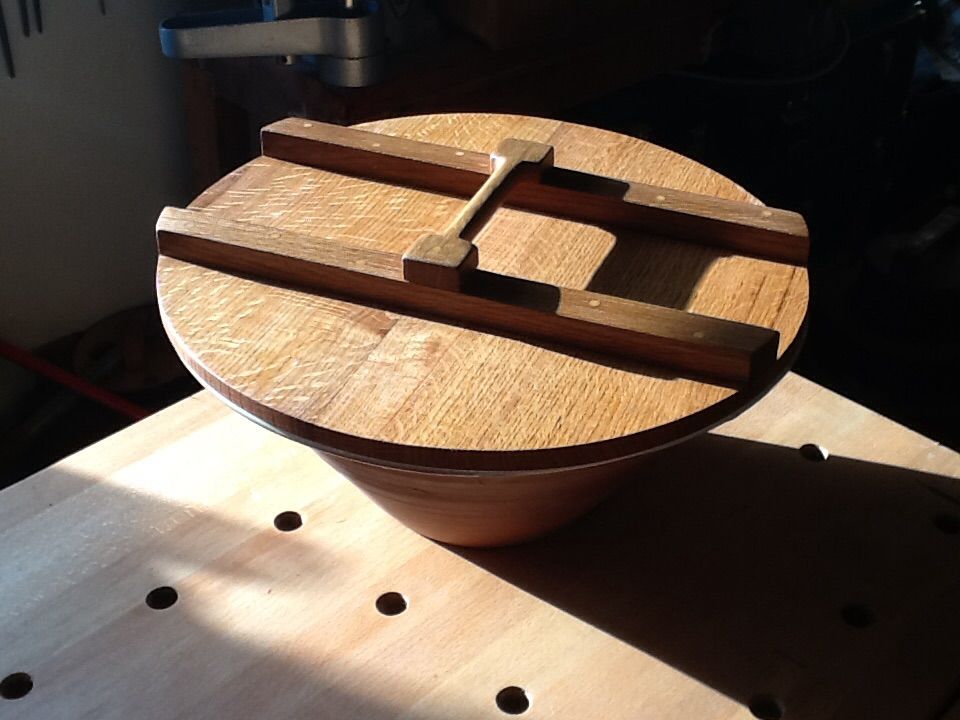I finally started on the lids for the two Pancheons I got from the nice folk at Butter Wynd Pottery today.
I'd picked up a old hall table that had been knocked apart on the boot got a quid and the two tops were big enough to make the lids I wanted. They had been stained and varnished to look like old oak but 30 mins with the belt sander cleaned it down to bare wood which I was happy to find was quarter sawn oak.
i used alphatic glue ( which is stronger than the wood and dries waterproof ) and clamped the boards together. After a hour it was cured enough for me to sand the joint and jig saw the things into suitably sized discs. I used the disc on the table belt sander to finish the edge.
The cross bars I tacked on with the resin glue, clamped them down and after a couple of hours drilled and pegged one of the lids and nailed the other together from underneath, making sure to angle the fastenings alternately.

Tomorrow I will trim the ends of the bars on the disc sander , fit cross handles on the tops and some sort of rim on the underneath of each to stop them slipping off. I've a bottle of food grade linseed oil from Tesco to rub on before use.
You found the same sort of lids on washing coppers, large pans and those big boiling vessels they use in brewing, I forget what they are called, mash tubs? Pine was often used it would seam, light and cheap.
ATB
Tom
I'd picked up a old hall table that had been knocked apart on the boot got a quid and the two tops were big enough to make the lids I wanted. They had been stained and varnished to look like old oak but 30 mins with the belt sander cleaned it down to bare wood which I was happy to find was quarter sawn oak.
i used alphatic glue ( which is stronger than the wood and dries waterproof ) and clamped the boards together. After a hour it was cured enough for me to sand the joint and jig saw the things into suitably sized discs. I used the disc on the table belt sander to finish the edge.
The cross bars I tacked on with the resin glue, clamped them down and after a couple of hours drilled and pegged one of the lids and nailed the other together from underneath, making sure to angle the fastenings alternately.

Tomorrow I will trim the ends of the bars on the disc sander , fit cross handles on the tops and some sort of rim on the underneath of each to stop them slipping off. I've a bottle of food grade linseed oil from Tesco to rub on before use.
You found the same sort of lids on washing coppers, large pans and those big boiling vessels they use in brewing, I forget what they are called, mash tubs? Pine was often used it would seam, light and cheap.
ATB
Tom





